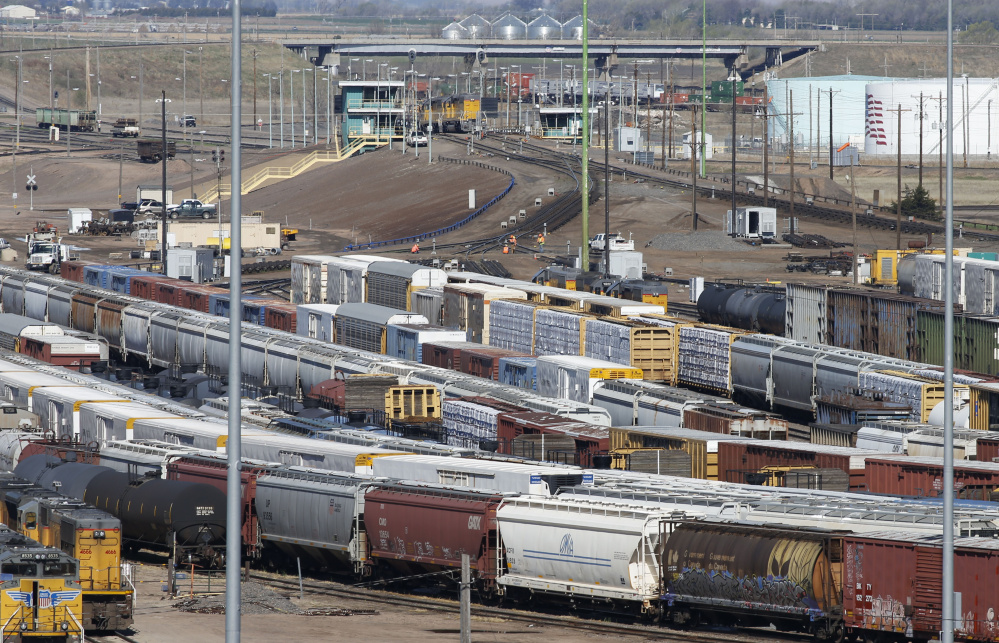Early this year, a railroad worker who had just been briefed on his duties for the day was discovered in a restroom, dead from an overdose of illegal prescription drugs. In the months that followed, tests conducted after three railroad accidents resulted in six employees testing positive for drugs.
Testing in 2016 has shown that nearly 8 percent of workers involved in rail accidents were positive for drug use, including marijuana, cocaine, ecstasy, benzodiazepine, OxyContin and morphine, according to internal federal documents obtained by The Washington Post.
The number of post-accident drug positives was the highest since the Federal Railroad Administration began keeping records in 1987 and three times greater than it was 10 years ago.
The number of railway workers – including engineers, train crew and dispatchers – who tested positive for drug use in random tests soared about 43 percent last year, the documents show.
After rail accidents in 2014, no one tested positive for drugs, and just two people did last year. With more than three months left in this year, 16 rail workers have shown positive in post-accident tests.
Railroads transported 565 million passengers and 14.2 million carloads of freight last year. Their workers rank among the most heavily drug-tested employees in the country, faced with drug screening before they are hired, random on-the-job testing and another round of testing every time they make a significant mistake.
But after several years in which heroin and illegal opioid use has increased in the general population, there is hard evidence that the use of those and other drugs may be on the rise in the railroad industry.
Faced with the initial positive test results, federal regulators began sounding an alarm this spring. This month, the heads of all of the nation’s freight and passenger rail lines were summoned to Washington for a closed-door session to deal with a crisis that federal officials fear has put workers and train travelers at risk.
Officials from the Federal Railroad Administration, National Transportation Safety Board and the Office of National Drug Control Policy spelled out their concerns and asked the railroads to help them address the growing problem.
This week they had a similar private session with railroad unions.
“We’ve discussed in depth the kind of data that we are seeing, the uptick in positive post-accident tests, the significant rise in positives in our random testing pool,” FRA Administrator Sarah E. Feinberg said in remarks prepared for the Railroad Safety Advisory Committee on Thursday. “We are seeing a trend going in the wrong direction, and we must address it immediately.”
A record 28,647 people died from heroin and prescription opioid use in 2014, according to the Centers for Disease Control and Prevention, and opioids caused more than 6 in 10 overdose fatalities.
Despite drug testing protocols, transportation workers are as susceptible to trends as the rest of society. The U.S. Department of Transportation drug-tests about 7 million people who hold commercial driver’s licenses, as well as railroad and transit workers, and the U.S. Coast Guard.
In the past five years, the DOT tests have shown sharp increases in use of amphetamines and natural opiates.
Among the railroad workers subject to random testing, however, the about 50,000 tests each year had shown no appreciable increase since 2009. Then they shot up by 43 percent last year. What’s more, the number of railroad workers found to be using drugs in the aftermath of rail accidents jumped dramatically this year.
Among the about 25,000 railroad workers who repair train engines and rail cars, FRA testing found that alcohol use was five times higher than that of railway workers who performed other tasks. Railroad drug testing is limited to about 120,000 workers who are considered “safety sensitive” – those whose performance puts lives at risk. The train-repair workers and about 70 percent of the 37,000 workers who maintain track beds and railroad right-of-ways are not required to undergo the same drug testing.
Feinberg in May finalized a new rule that would require “maintenance of way workers,” as the track workers are known, to undergo the same random drug testing as other workers. The railroads, however, are resisting the proposed rule.
Copy the Story LinkSend questions/comments to the editors.



Success. Please wait for the page to reload. If the page does not reload within 5 seconds, please refresh the page.
Enter your email and password to access comments.
Hi, to comment on stories you must . This profile is in addition to your subscription and website login.
Already have a commenting profile? .
Invalid username/password.
Please check your email to confirm and complete your registration.
Only subscribers are eligible to post comments. Please subscribe or login first for digital access. Here’s why.
Use the form below to reset your password. When you've submitted your account email, we will send an email with a reset code.